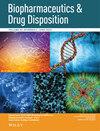Species Differences in Carboxylesterases Among Humans, Cynomolgus Monkeys, and Mice in the Hydrolysis of Atorvastatin Derivatives
Abstract
Nonclinical trials are crucial for assessing pharmaceutical efficacy and safety prior to clinical trials. However, disparities in drug metabolism between humans and animals complicate extrapolating animal data to humans. Variability in drug-metabolizing enzymes, such as carboxylesterases (CESs), contributes to differences in drug kinetics. This study aimed to explore species disparities in CES substrate specificity among humans (hCES1), mice (mCES1), and cynomolgus monkeys (mfCES1) using diverse atorvastatin ester derivatives. This study measured hydrolysis rates of 30 atorvastatin derivatives. Metabolites were identified via HPLC with an internal standard, measuring rates per unit time and enzyme amount. Enzyme metabolic activity was compared using hydrolysis rates. The structure of the alkoxy group resulted in differences ranging from approximately half to 8.97-fold between hCES1 and mCES1 and differences ranging from similar to 15.82-fold between hCES1 and mfCES1. Caution is warranted when extrapolating animal data to humans, especially for esters with diverse structures. Our focus on the alkoxy group structure highlights its impact on hydrolysis rates. Further investigation into species differences among CES enzymes is essential for accurate translational research.

 求助内容:
求助内容: 应助结果提醒方式:
应助结果提醒方式:


